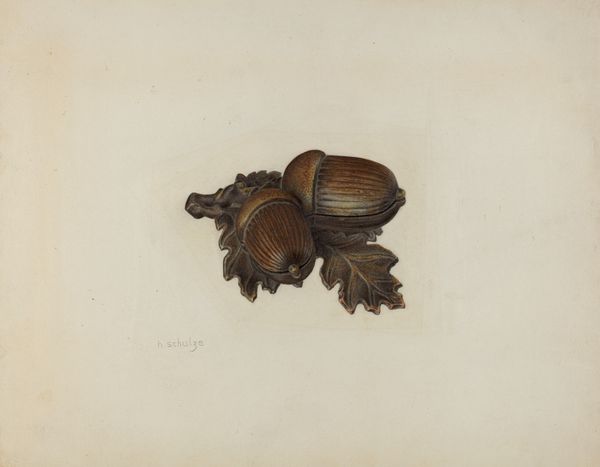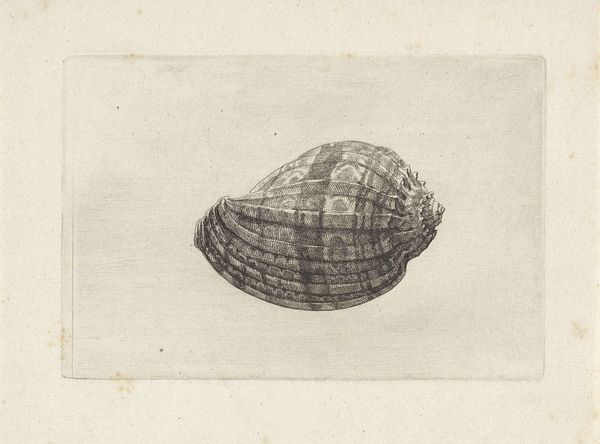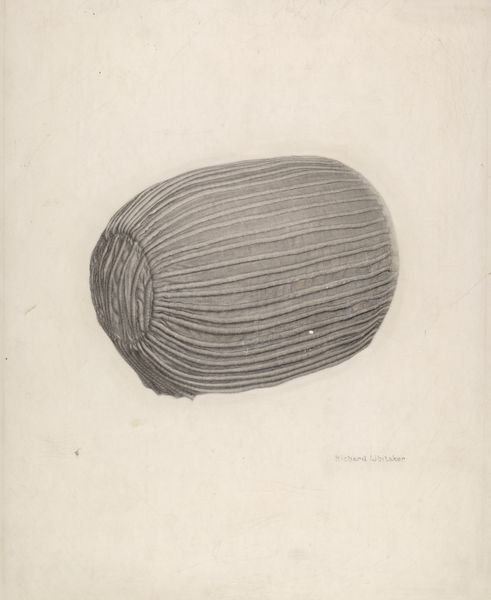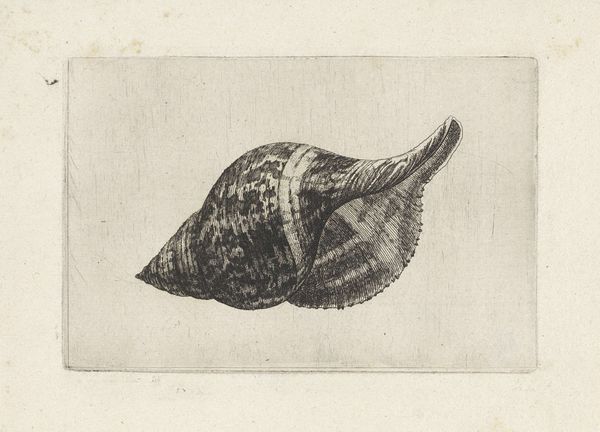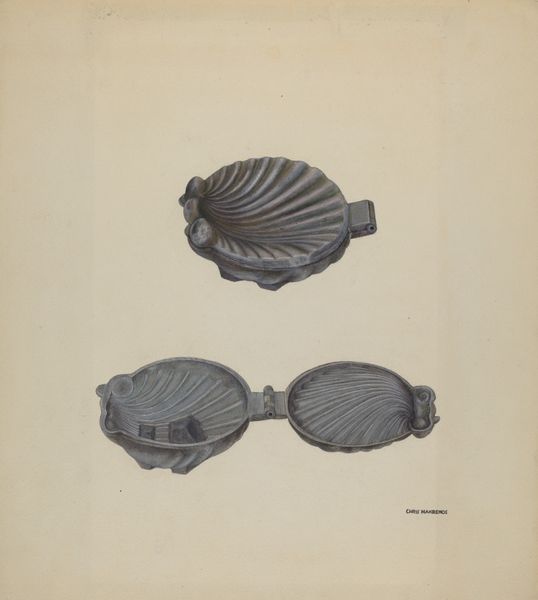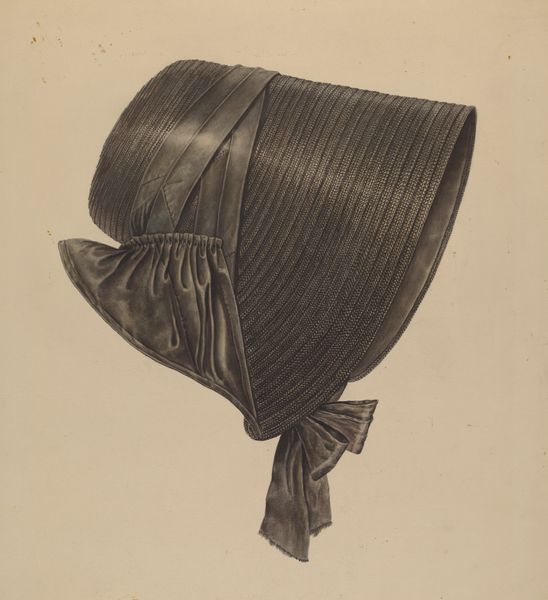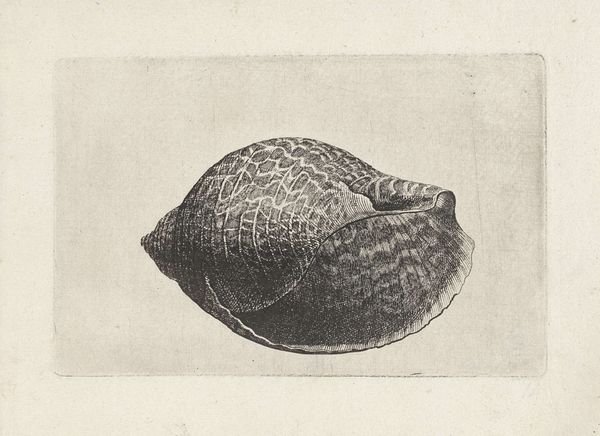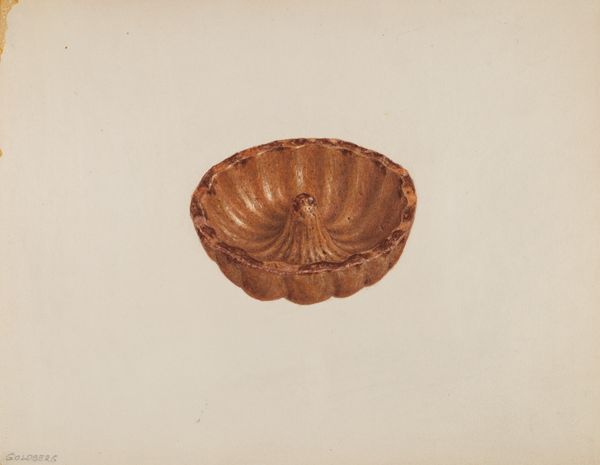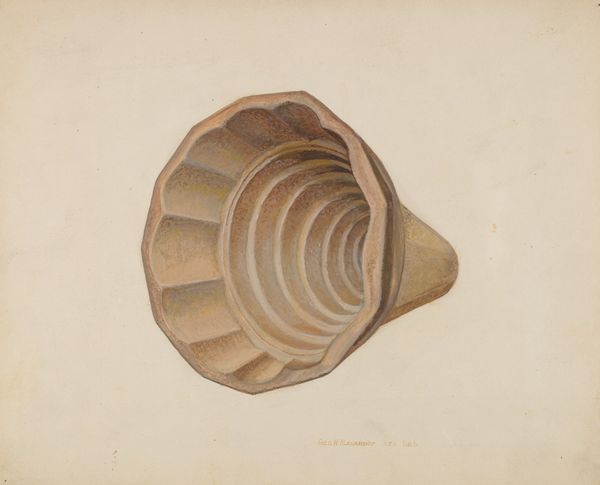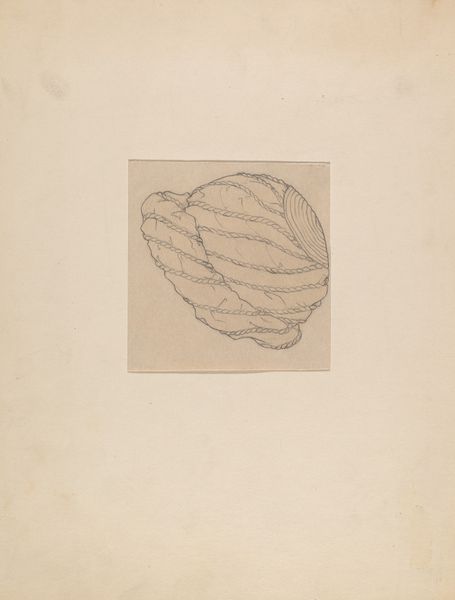
drawing, pencil
#
drawing
#
pencil
#
academic-art
#
realism
Dimensions: overall: 22.3 x 28.3 cm (8 3/4 x 11 1/8 in.) Original IAD Object: 5 3/4" long; 4 1/4" wide; 2" high
Copyright: National Gallery of Art: CC0 1.0
Curator: I find this work, entitled "Pin Tray" by Helen Hobart, created around 1939, quite evocative. It's a pencil drawing on paper. What's your initial impression? Editor: Stark. Severely simple in its forms and tone, but it feels precise—the execution feels important somehow. It really insists on the... thing-ness of the pin tray. Curator: Indeed. The meticulous detail given to rendering this everyday object elevates it, doesn't it? Acorns and oak leaves—symbols of strength, potential, and resilience. It’s a fascinating object to choose. Almost talismanic, don't you think? Editor: I’m wondering about this specific pin tray itself, though. Look at the detail Hobart renders. Is this mass-produced, or something bespoke? Is she fascinated by the rise of industrial processes that reproduce organic motifs, mimicking the "hand made" for a burgeoning consumer class? I want to know more about *this* object's history. Curator: That's interesting. Seeing it through a materialist lens. I was drawn to the symbolism first. But you raise a pertinent question. Could this replication hint at the democratization of craftsmanship? Allowing more people access to traditionally high-status objects? Editor: Perhaps. Or does it signal something darker? A diminishment of artistry? A trade off of meaningful labor for... trinkets. And Hobart documenting the result with realism feels critical too. Curator: I appreciate that perspective. I still believe the very act of painstakingly drawing this— regardless of whether it’s mass-produced or not—imbues it with a new kind of presence. One reflecting stability during tumultuous times perhaps. Strength from humble objects. Editor: A pin tray functioning like some sort of sturdy time capsule? Anchoring value to a specific historical artifact, regardless of origin? Interesting to think about this tiny quotidian object with such enduring, yet competing symbolic value. Curator: Precisely. Thank you. Now I’m considering what role that played in its making and subsequent life in the world. Editor: It's remarkable how an object like this allows us to question value across many spectrums: personal, symbolic, economic.
Comments
No comments
Be the first to comment and join the conversation on the ultimate creative platform.
